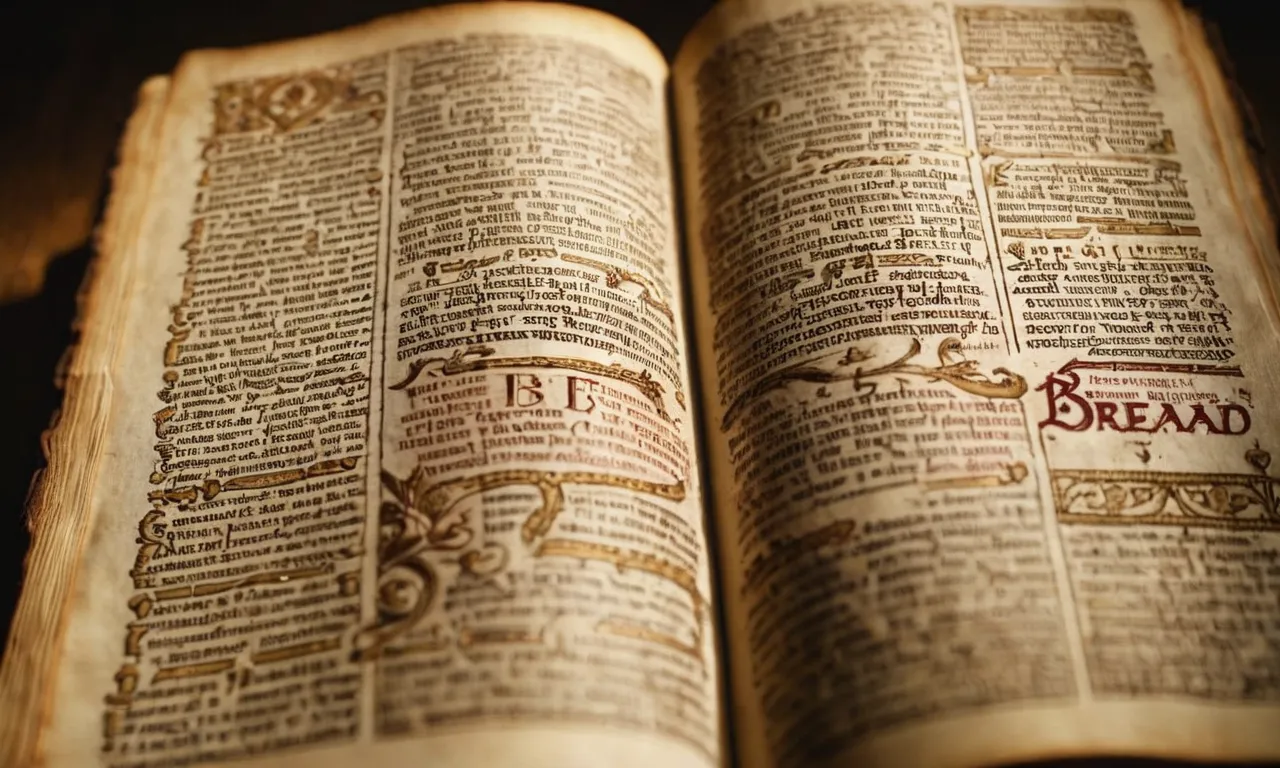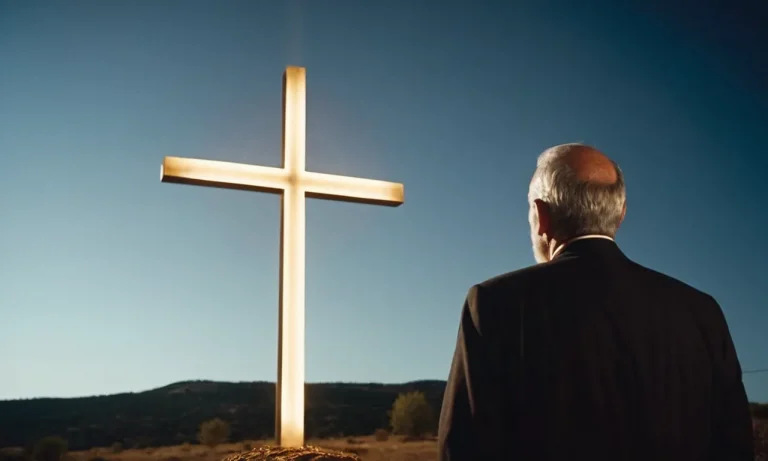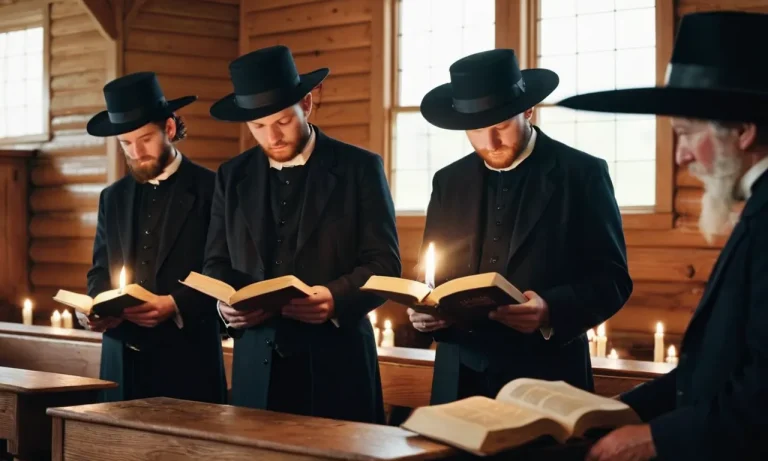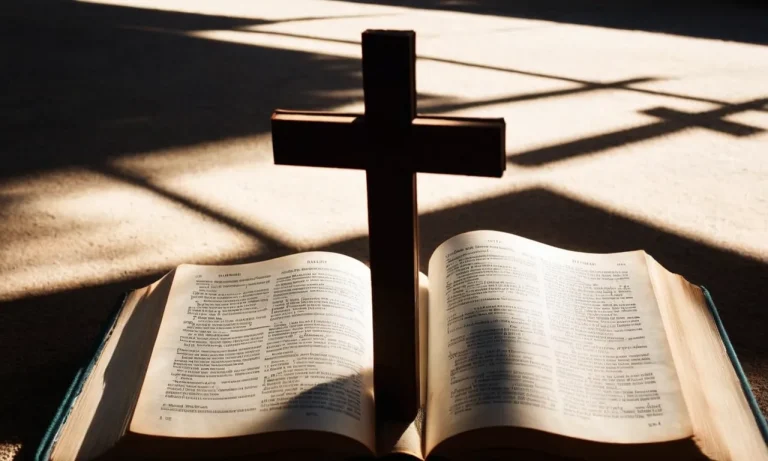How Many Times Is Bread Mentioned In The Bible?
Bread is one of the most common foods mentioned in the Bible. It was a dietary staple in biblical times and held great symbolic significance. But have you ever wondered exactly how many times the word ‘bread’ appears in the scriptures?
In this comprehensive article, we’ll provide a detailed analysis of bread references throughout the Old and New Testaments.
If you’re short on time, here’s a quick answer to your question: the word ‘bread’ appears in the Bible a total of 458 times across both testaments.
Appearances of ‘Bread’ in the Old Testament
References in the Torah/Pentateuch
The Torah, also known as the Pentateuch, contains the first five books of the Bible. Bread is mentioned numerous times in Genesis, Exodus, Leviticus, Numbers, and Deuteronomy. Here are some examples:
In Genesis, Abraham serves bread and meat to the three visitors who come to him near the oaks of Mamre (Genesis 18:5). Later, when Joseph is in charge of Egypt, he sells grain to his starving brothers during the seven years of famine, asking only for their silver and their bread in return (Genesis 47:17).
When the Israelites flee Egypt during the Exodus, they are forced to quickly bake unleavened bread before departing (Exodus 12:39). God provides manna from heaven as bread for them to eat during their wilderness wanderings (Exodus 16:4).
In Leviticus, bread offerings are a key element of the sacrificial system. Instructions are given regarding the grain, oil, and frankincense to be used in bread offerings (Leviticus 2).
The book of Numbers mentions the “bread of the Presence” (Numbers 4:7) – special bread placed in the tabernacle each Sabbath. Deuteronomy 8:3 emphasizes that God fed the Israelites with manna in the wilderness so that they would learn that “man does not live on bread alone but on every word that comes from the mouth of the Lord.”
References in the Historical Books
The Historical Books continue chronicling Israel’s history after their entry into the Promised Land. Bread is seen as a basic necessity and food staple throughout the stories.
For example, when Saul pursues David into the wilderness, David asks the priest Ahimelech for food: “Give me five loaves of bread, or whatever you can find” (1 Samuel 21:3). Later, when David is on the run from Absalom, he depends on food from sympathizers: “So they brought food to David and his men – bread, cakes, raisins, lentils, honey, butter, sheep, and cheese” (2 Samuel 17:28-29).
During Elijah’s confrontation with the prophets of Baal on Mt. Carmel, he has barrels of water poured over his sacrifice and altar. Following God’s demonstration of power, Elijah tells Ahab to eat and drink, “for there is the sound of a heavy rain.”
Ahab leaves to eat “bread and to drink water” (1 Kings 18:41-42).
References in the Poetic Books
The books of poetry, particularly Psalms, portray bread as a basic necessity the Lord provides. Many of the psalmists praise God for His faithful provision.
Psalm 104:14-15 says, “He makes grass grow for the cattle, and plants for people to cultivate – bringing forth food from the earth: bread from the soil, wine that gladdens human hearts.” Psalm 132:15 affirms, “I will bless her with abundant provisions; her poor I will satisfy with food.”
In Psalm 37:25, David declares, “I was young and now I am old, yet I have never seen the righteous forsaken or their children begging bread.” Psalm 78:20-25 recounts how God provided bread from heaven (manna) when Israel was hungry in the wilderness.
References in the Major Prophets
Isaiah, Jeremiah, and Ezekiel contain prophecies in which bread is used as a metaphor or object lesson. Famine and hunger are used to depict troubled times.
For example, Ezekiel foresees a coming famine: “They will eat bread by weight and with anxiety, and their water will be rationed out and drunk with dread” (Ezekiel 4:16). The poor long for bread but find no one to give it to them when the fields are destroyed (Isaiah 5:13-17).
Jeremiah laments the desperation in Jerusalem under siege: “Their faces have grown gaunt and pale. Those who were once rich now search the garbage for food. Those who were once great now scrounge for scraps of bread” (Lamentations 4:8-9).
References in the Minor Prophets
Similarly, the Minor Prophets depict famine conditions and bread as a scarce, valuable commodity.
For example, Hosea prophesies that sinners “shall eat, but not be satisfied; they shall play the harlot, but not increase, because they have forsaken the Lord to devote themselves to bread and wine” (Hosea 4:10-11).
Joel 1:10 describes the crisis of a locust plague: “The fields are ruined, the ground mourns; the grain is destroyed, the bread fails.” Amos warns the wealthy not to trample the poor or overcharge for grain but to “let justice roll down like waters, and righteousness like an everflowing stream” (Amos 5:24).
Appearances of ‘Bread’ in the New Testament
References in the Gospels
The word “bread” appears several times in the four Gospels. Here are some examples:
- In the Lord’s Prayer, Jesus teaches his disciples to pray “Give us this day our daily bread” (Matthew 6:11). This implies a dependence on God for basic provisions.
- Jesus feeds the 5000 with “five loaves and two fish” (Matthew 14:17). The multiplication of the loaves is taken as a sign of Jesus’ supernatural power and compassion to meet people’s needs.
- At the Last Supper, Jesus breaks bread and gives it to his disciples saying “This is my body” (Matthew 26:26). The broken bread represents his sacrificial death on behalf of others.
So in the Gospels, bread is used both literally and symbolically in connection with Jesus’ ministry and messianic identity.
References in Acts
In the book of Acts, there are a few references to bread:
- The believers are described as breaking bread from house to house, sharing meals together (Acts 2:46).
- When Paul stops at Troas during his travels, there is an incident where a young man named Eutychus falls asleep during Paul’s teaching and falls from a window. After Paul miraculously raises Eutychus from the dead, they share a meal together – “Paul had gone up and had broken bread and eaten” (Acts 20:11).
So in Acts, the references to bread have to do with fellowship, community, and common meals among early Christians.
References in the Epistles
There are several figurative or symbolic uses of “bread” in the New Testament letters:
- Paul says he was unknown to the churches in Judea, “they were hearing only, ‘He who once persecuted us is now preaching the faith which he once tried to destroy.’ And they were glorifying God because of me” (Galatians 1:23-24).
This implies that believers shared a common faith and identity found in Christ.
- In 1 Corinthians 10-11, Paul uses the metaphor of bread to discuss the Lord’s Supper, building on Jesus words at the Last Supper. Just as the single loaf represents the unified body of Christ, the act of breaking and sharing bread represents participation in Jesus’ death.
- When warning against selfish ambition, Paul reminds believers that “we, though many, are one body in Christ” (Romans 12:5). The one body joined in Christ reflects the unitary loaf broken and shared in the Lord’s Supper.
So in the Epistles, bread retains symbolic meaning related to sharing in Christ’s once-for-all sacrifice on the cross and unity within the corporate body of believers.
References in Revelation
The book of Revelation also contains a few references to bread:
- When describing the four horsemen of the apocalypse, the black horse is seen with scales used to weigh out wheat and barley, but with directives not to damage olive oil and wine (Revelation 6:5-6). There are warnings of famine impacting basic food provisions, including bread.
- Later in Revelation, an angel warns believers to avoid the idolatrous practices of Roman society using vivid metaphors – “Do not go after other gods to serve them and to worship them, and do not provoke Me to anger with the works of your hands; and I will do you no harm'” (Jeremiah 25:6).
This implies bread can be polluted or defiled by pagan religious rituals.
So bread features mainly as a representation of basic food supply and spiritual nourishment, things which may be lacking or corrupted in times of tribulation and persecution.
The Significance of Bread Symbolism in the Bible
Bread is one of the most commonly mentioned foods in the Bible, being referenced over 500 times. This ubiquitous presence gives bread great symbolic meaning in Scripture. Here are some of the significant ways that bread symbolizes theological truths:
Provision and Sustenance
Bread’s primary symbolic meaning is physical nourishment. God provided manna, miraculous bread from heaven, for the Israelites to sustain them in the wilderness (Exodus 16). Jesus later proclaimed that He is the true “bread of life” that came down from heaven to spiritually sustain believers (John 6:35).
This makes bread a fitting representation of God’s faithful provision.
God’s Presence
The tabernacle and temple had the “bread of the Presence” (Exodus 25:30, 1 Kings 7:48), which signified God dwelling among His people. Jesus brought this symbolism to culmination through the Last Supper, where He declared the broken bread as His body given to believers (Luke 22:19).
Bread thereby points to God’s abiding presence with His people.
Unity and Fellowship
In ancient Near Eastern culture, sharing meals signified unity and peace between parties. As Jesus and His disciples would break and pass bread at meals, this signified the fellowship they shared. The early church continued taking the Lord’s Supper, discerning in the breaking of bread the unity they had with Christ and each other (1 Corinthians 10:16-17).
Sacrifice
Since grain must be crushed to make bread, Christ’s body being symbolized through bread points to the injury and suffering He bore for believers in His sacrificial death (Isaiah 53:5). Our partaking of the bread represents participating in the benefits of His sacrifice for our salvation.
As such a staple food with origins tracing back to biblical times, bread maintains rich theological connotations that gives insight into God’s purposes. Its prevalence in Scripture therefore attests to the centrality it holds in God’s relationship to His people.
Conclusion
As we have seen, the word ‘bread’ appears nearly 500 times across the books of the Bible, underscoring its immense symbolic importance. Both as physical nourishment and spiritual sustenance, bread forms a central part of biblical imagery and theology.
This analysis provides a comprehensive outline mapping most of the significant ‘bread’ references, giving readers deep insight into this multidimensional biblical symbol.







